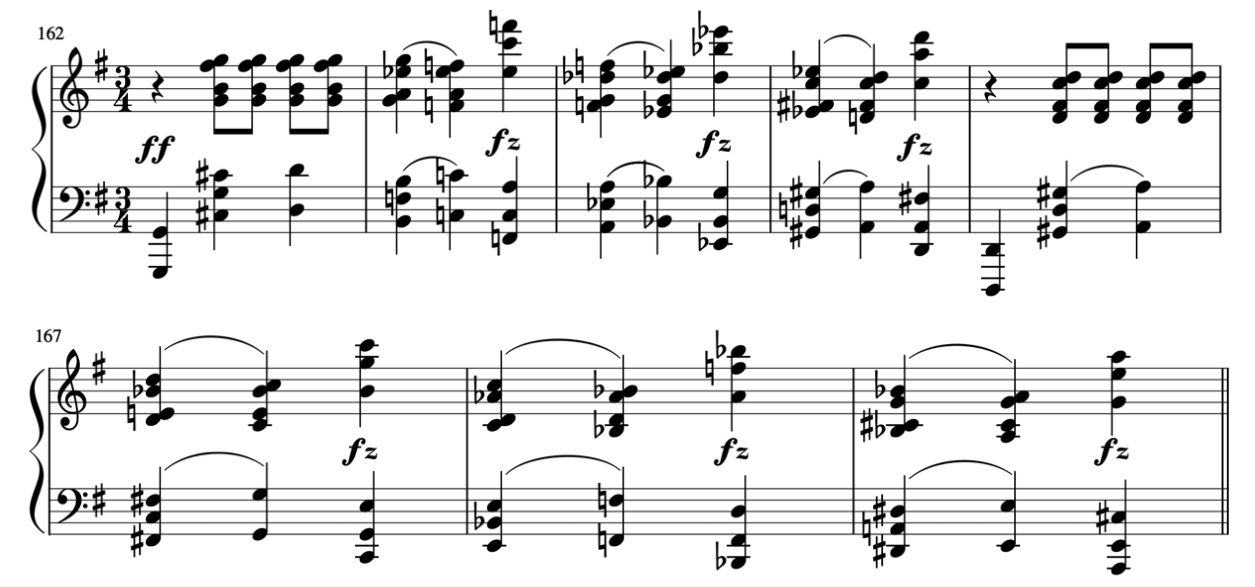Ergonomics
Make your arrangement playableRuns and Arpeggios
Carillonneurs typically play using alternating hands, which can make passages with quick scales and other consecutively upward- or downward-moving notes diffcult to play. This is because such passages require the performer to cross one hand over the other. For this reason, arrangers will often alter these passages in order to make them easier to play at fast tempos. Consider the figures below:


A more idiomatic way to write these arpeggios for the carillon would be to make them "zig and zag" as shown below. The result sounds more or less the same, but is vastly more ergonomic on the carillon.


You'll likely come across these kinds of figurations frequently when making arrangements and you should be able to apply this technique in most cases.
Take George Gershwin's Prelude No. 1 for piano as an example. In measure 20, Gershwin writes the following figuration in the right hand:

Played an octave higher on the carillon:
This arpeggiation is very difficult to play on the carillon at such a quick tempo. Applying the same technique as above results in a much easier to play, but also similarly sounding figure:

Fast repeated notes
On carillons with heavier bells, the batons may be slow to return to their original height after being struck, making it diffcult to play a note repeatedly in quick succession. In addition, even when such rapidly repeated notes are physically playable on the carillon, they may not sound as clear and articulate on the bells as they might if played on a different instrument.
An effective way to rewrite such rhythms for the carillon is to play them as alternating octaves, thirds, sixths, or other intervals.
Example 1: Sibelius - Valse Triste
In measures 162-169, Sibelius writes the following:

The fast, repeating eighth notes can be difficult to play at such a quick tempo. In his carillon arrangement of this piece, Erik Vandevoort arranges this passage as follows:

Writing the repeated notes in the first and fifth measures as alternating octaves makes the rhythm much easier to play, but it also makes teh rhythm sound crisper and clearer, heightening the sense of drive and momentum.
Example 2: Strauss - Overture to Die Fledermaus
Strauss writes quickly repeating triplets in measures 8 to 10:
Piano reduction of mm. 1-12:

In a carillon arrangement, the chords in this passage would need to be thinned out considerably. But even with the harmony reduced, the rhythm in mm. 8-10 still poses a problem. A solution that works well is to apply the same technique as above:
Carillon arrangement (transposed to D major):

At a quick tempo, the passage in the resulting carillon arrangement preserves the feeling of the original piece, while being much more ergonomically feasible on the instrument.

